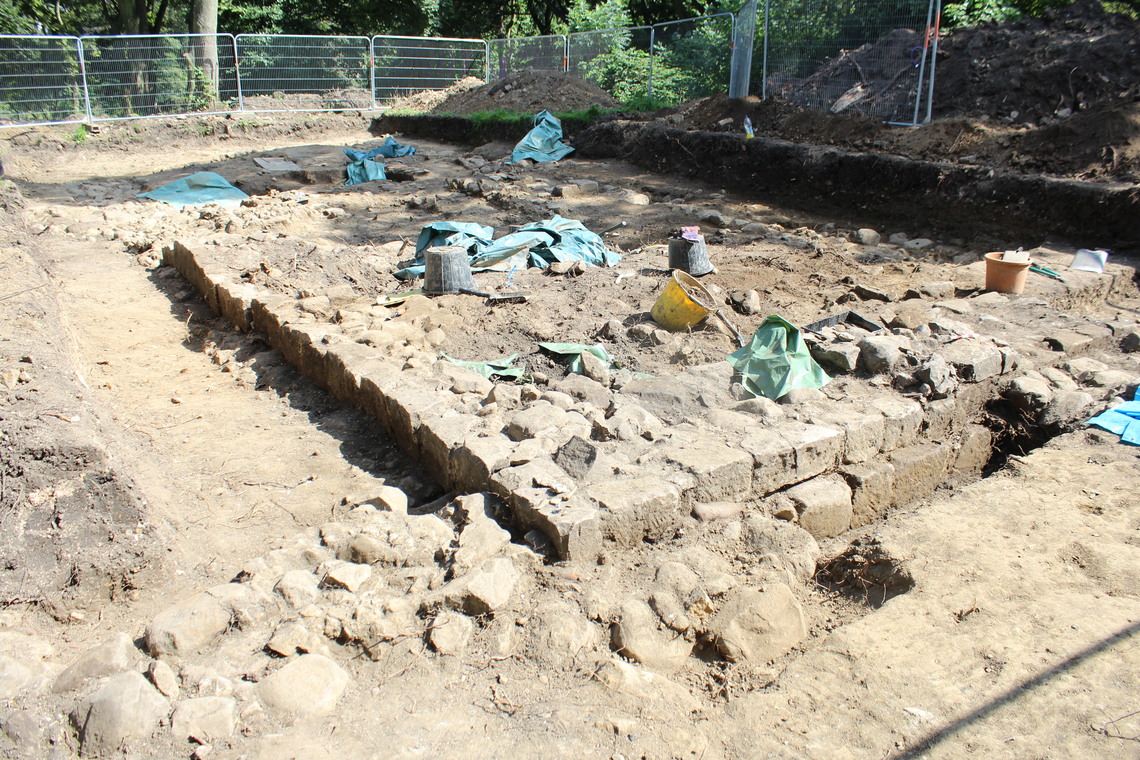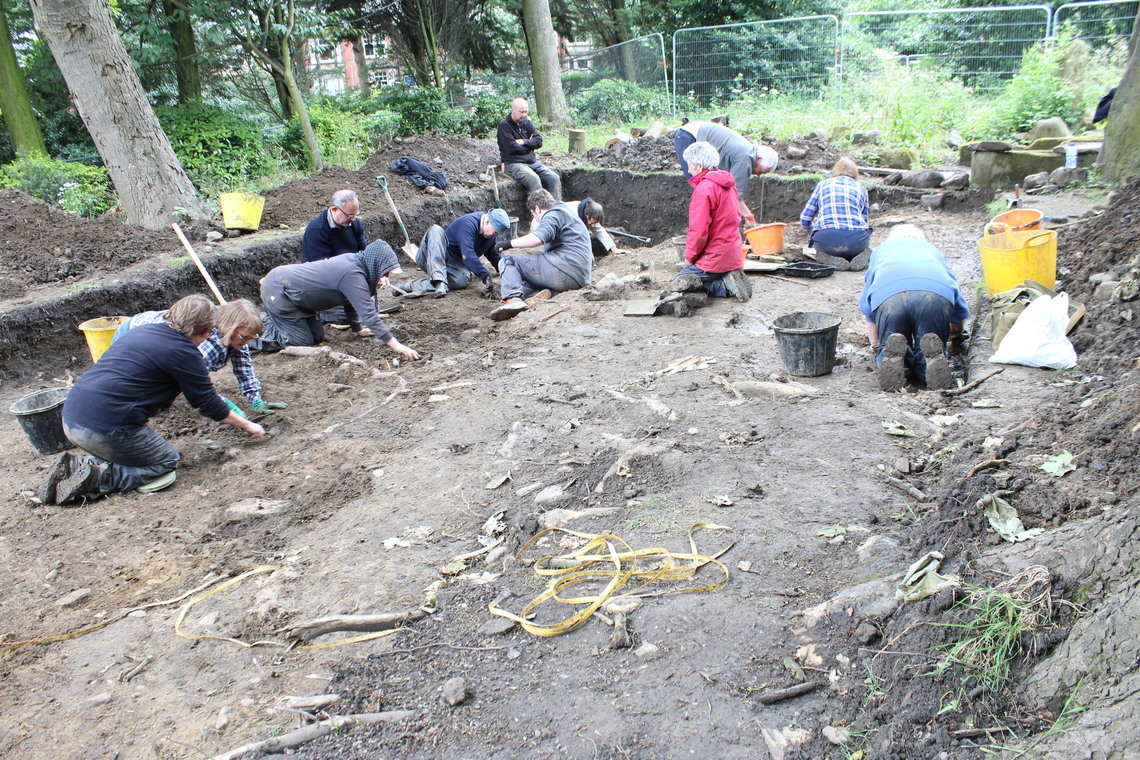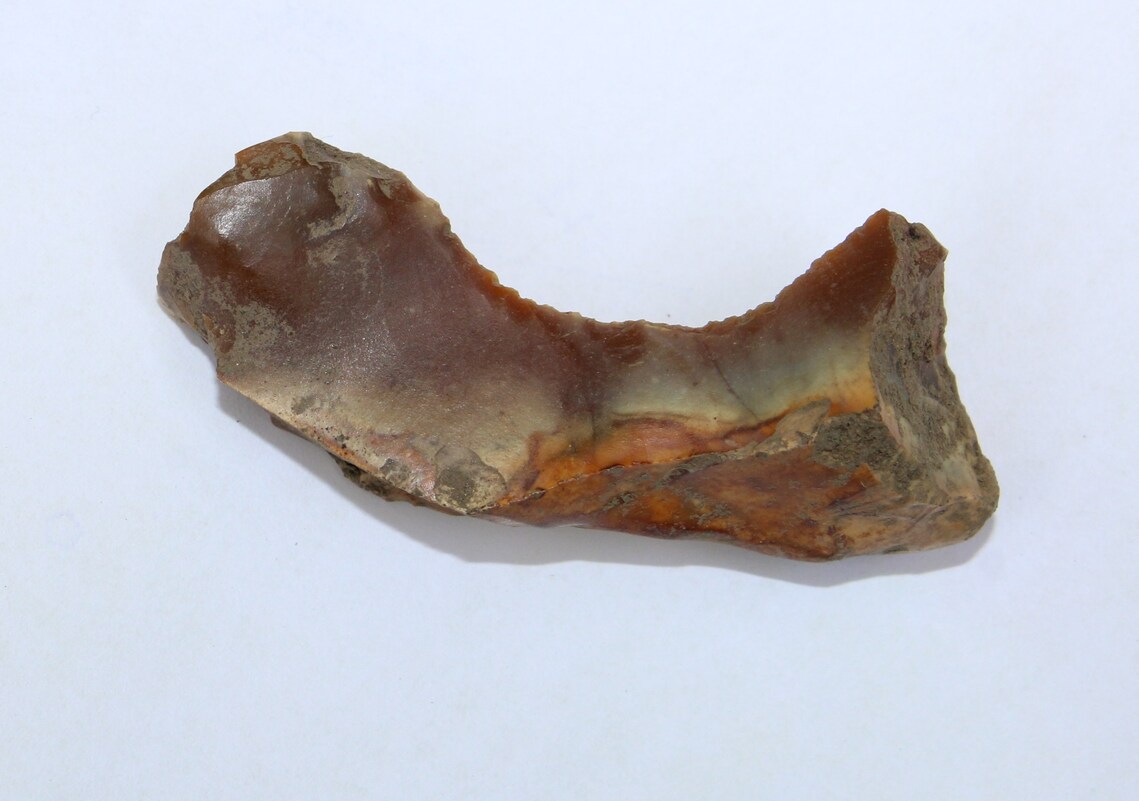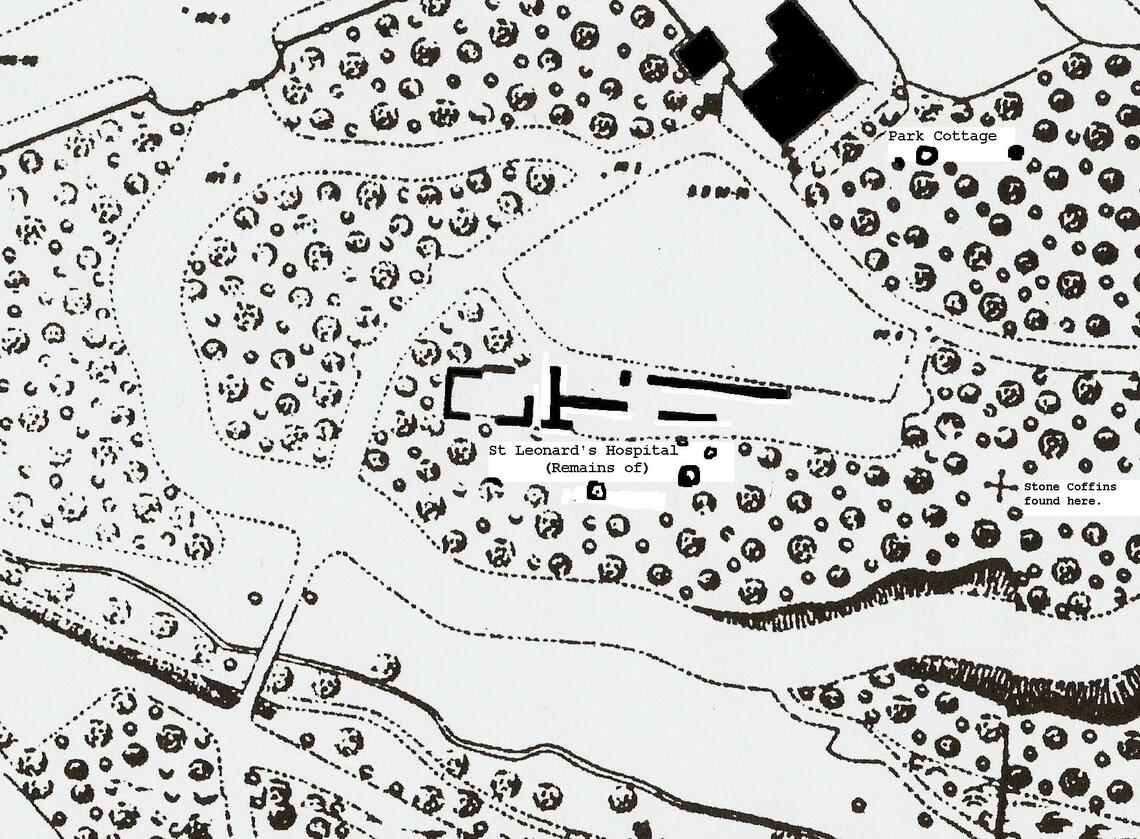A full account of the three years investigation and life in a medieval hospital described in the revised edition of "The Pow Burn" available in local newsagents and bookshops from November 2017.
The proposed 5 week investigation actually lasted 12 weeks from the end of May until the end of August 2014. Once the high status medieval floor tiles were found and concluded to be part of the church floor it was decided that the dig should be extended till the size of this building was established and recorded.
9th August - The foundations of four walls of the church have now been revealed which have probably not been seen for 100's of years. The west doorway found with steps leading into the building.

2nd August 2014 - Because so much has been discovered on this dig the dig is being extended until 15th August so the full extend of the medieval church can be revealed.
29th June 2014 The last official day's digging and everyone still full of enthusiasm. It's been the best and most rewarding dig on this site to date giving us lots of information about the size and structure of the hospital buildings.
A large trench was dug on the first day revealing interesting walling as well as pottery.
An interesting find was this worked piece of flint shaped to create a scrapping tool, possibly to remove meat from bones or bark from vegetation. Prehistoric and possibly palaeolithic.
Roof tiles (with holes to fix), medievil stained glass and lots more pottery found on 31st May
SAINT LEONARD’S HOSPITAL.
Spital Dene derived its name from St. Leonard’s Hospital which was first referred to in an assize roll of 1293 which mentions “the bridge of the hospital of Saint Leonard”.
The location of the hospital does suggest it may have been a Leper Hospital because of its remote location away from Tynemouth township. Situated on the only road from Newcastle to Tynemouth where the Prior of Tynemouth held markets on Sundays from 1275 meant there would be many people travelling across the Spital Bridge. Medieval Hospitals are known to be quite commonly situated close to bridges which had important symbolic religious connotations and beggars or lepers stationed there could collect alms from all those crossing.
The word “hospital” derives from the Latin “hospes”, meaning a stranger, foreigner or guest. The original function of a hospital was to provide hospitality and shelter for travellers of all kinds, not exclusively for the sick but later a variety of institutions came into being to cater for the poor, the aged and the sick which bore the name “hospital”.
In 1539 when Tynemouth Priory was dissolved Spytel House and Spytal Close were surrendered to the Crown. The land was then leased to Sir Thomas Hilton by King Henry VIII for a term of 21 years. This land eventually passed to Algernon the tenth Earl of Northumberland in 1637.
It was written that the ruins in 1789 were still to be traced a little to the west of Tynemouth on the road to Newcastle. The old road to Newcastle went past Holy Saviour Church across the Spital Dene and along Tynemouth Old Road (now called Preston Avenue ) to Preston Road, then southwards to Christ Church and from then westwards through the village of Chirton. The present direct road to Tynemouth was not made until after the peace of 1815. The Spittle was one of the old burial places of the Parish of Tynemouth. The first two burials recorded in the Parish Register were in 1656 and 1659 being the two sons of Gabriel Coulson the Parish Clerk. In 1662, 23 burials were recorded and the last recorded at this site was John Ffoster of Whitley in 1713/14.
When laying out Northumberland Park in 1885 between the two branches of the Pow Burn, the foundations of a medieval building were discovered though an excavation was not carried out far enough to discover its plan. The building appeared to be of considerable size. Its chambers were paved with stone and the few mouldings that remained were of an early English character. Some fragments of flowing window tracery, the base of a cross and the matrix were also found on the spot.
The matrix is a plain limestone slab measuring 5ft 9 inches in length and 2ft 7inches in breadth showing indentations which contained brasses of a layman and his wife connected by an inscription fillet. Below these two large figures are five smaller indents for the brasses of their daughter and four sons. The male figures stand on mounds and seem to have worn long loose sleeved tunics, the two females had similar costumes, their hair curled at the side and each had a headdress covered by a kerchief. A date of between 1400 and 1420 has been assigned to the execution of the work.
Two stone coffins were also unearthed in the course of the excavations. They can still be seen in the Park and many a youngster had lain in them pretending to be dead or trying to imagine who had really been laid to rest there.
In January 1968 a complete skeleton and three skulls were unearthed by corporation gardeners near the remains of the Hospital.
In 2011 as part of the heritage strategy for Northumberland Park forming part of the “Parks for People” project being part of North Tyneside Council’s application for Heritage Lottery Funding to enhance the park an archaeological survey took place to provide information for the restoration plans. Then in June and July five trenches were dug around the known hospital remains and one on buildings known from early 19th century maps near the Spittal Bridge.
Several medieval graves were uncovered and also a mixture of bones which could represent many more burials, which were probably disturbed when what was a hilly mound was levelled by the Victorians when creating the park. Also found was a considerable amount of pottery, roof and floor tiles but the most interesting finds were a 5000 year old Neolithic stone axe which probably came from a known "axe factory" in the Langdale Valley in the Lake District and a Henry VIII silver penny circa 1520.
Further Archeological excavations are to be carried out during the summers of 2013 and 2014 to discover more about this important historical site.
From a map of 1896 showing extent of the walls of the Hospital
For more information about St Leonards Hospital see
The Story of Northumberland Park
by Mike N. Coates
published by Summerhill Books in 2012





